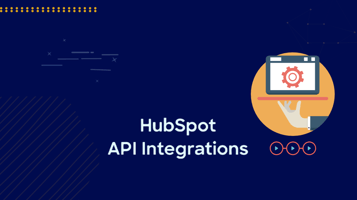Table of contents
Inbound marketing is a marketing technique that seeks to attract customers to your business organically by creating helpful, valuable content and experiences for them. This is opposed to outbound marketing, which consists of more traditional approaches geared toward a wider audience—such as print ads and TV commercials.
Perhaps the most powerful selling point for inbound marketing is that it works. According to a survey by HubSpot, for example, 76 percent of organizations in North America say that they “primarily conduct inbound marketing.” Meanwhile, 77 percent of B2B buyers prefer to do their own research before speaking with a sales representative.
Historically, many businesses in the financial services industry have been slower to change and adopt new technologies, including digital marketing. A 2018 report found that 46 percent of financial services companies believe that technology is “difficult to master,” compared with 37 percent in other industries.
The good news is that this is changing rapidly as more and more organizations realize the benefits of inbound marketing for financial services. Below, we’ll discuss the special concerns that financial services companies have with inbound marketing and how inbound marketing has the power to reshape the financial services landscape.
How Inbound Marketing Is Different for Financial Services
“Inbound marketing” isn’t a single approach: it’s a collection of techniques that you have at your disposal, as best fits your company, your industry, and your prospective customers. So with that caveat in mind, what’s different about inbound marketing for financial services?
1. More complex products and services
With some inbound marketing campaigns, the value of the product is obvious—think consumer goods such as dog food or running shoes. Financial products and services, however, have a great deal more complexity and nuance to them. This is especially true when trying to differentiate your offerings from your competitors.
Inbound marketing for financial services, then, needs to focus on simple, clear, accessible, and educational messaging. Content such as tutorials, explainer videos, and user testimonials can all help prospective customers demystify and understand your offerings.
2. Longer nurturing process
Financial products and services are much less subject to “impulse buys” from their customer base. This is largely due to the complexity mentioned above, as well as the risk of making a bad financial investment. After all, financial companies are asking customers to entrust their hard-earned money to them, building relationships that may last decades.
This means that inbound marketing for financial services typically requires a longer lead nurturing process than in other industries. Case studies and webinars can help reassure and educate prospects, while free trials and sign-up bonuses can provide the impetus needed to make the final conversion.
3. More dynamic content needed
Not only does inbound marketing for financial services require a longer nurturing process, it also faces the challenge of getting prospects interested in your product lineup. Despite the benefits of establishing a solid portfolio, it’s far from easy to get people excited about stodgy, “boring” financial topics.
Financial services companies that use inbound marketing need to experiment and get creative in order to attract more leads and boost engagement. This could include the use of social media, live videos, Q&A sessions, and insightful thought leadership articles that help demonstrate your business value to prospective customers.
How Inbound Marketing Is Reshaping Financial Services
For those financial services companies that have adopted inbound marketing, the rewards can be substantial. Below are some inbound marketing techniques that have reshaped the landscape of the finance industry.
1. Content pillars and topic clusters
Blogging (i.e., writing articles about important topics for your intended customer base) is one of the most widely used and most valuable inbound marketing techniques. According to HubSpot, companies with blogs generate 55 percent more website visitors and 67 percent more leads. Content pillars are long-form blog articles that attract your target audience by demonstrating expertise, while topic clusters are groups of articles focused on separate subtopics and search keywords.
2. Data-driven marketing
Personalization is a valuable technique for financial marketing, helping to provide special offers and recommendations to individual customers. However, just 38 percent of consumers say that their bank is effective at personally understanding them. Data-driven marketing collects and integrates a wide variety of information to help deliver a more personalized experience to each customer.
3. Marketing automation
Marketing automation is the “glue” that binds together your inbound marketing efforts, helping move leads through the stages of the marketing funnel. For example, once a prospect has provided their contact details, you can continue to send them relevant information and offer to connect them with a sales representative after a period of time. Being able to personalize content and deliver it to the right people is an especially valuable feature of marketing automation tools.
Conclusion
Inbound marketing plays a crucial role in helping financial services companies attract and retain more customers. To learn more about sales and marketing strategies for financial services, check out the latest articles on our blog. You can also get in touch with our team today for a consultation about how we can help with your business needs and objectives.



